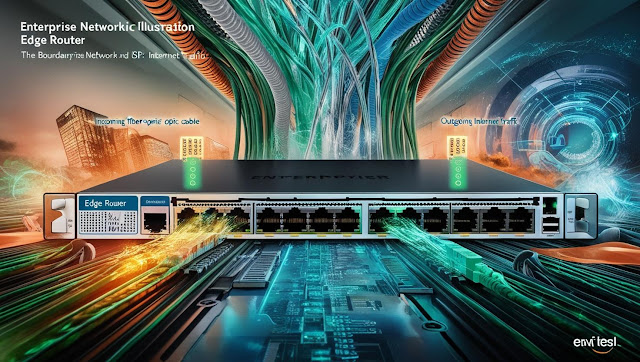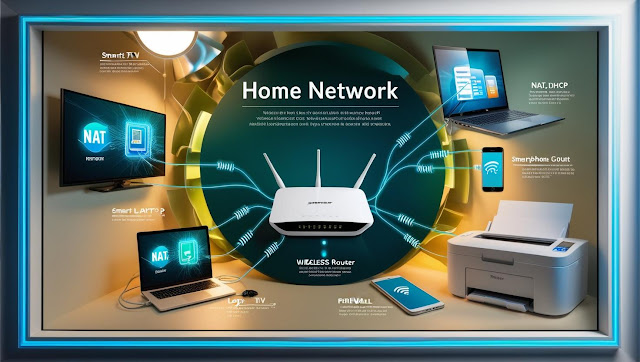Detailed Breakdown: Routers in Networking Infrastructure
What Is a Router?
🟢 Example: When you browse a website, your request goes from your laptop → router → ISP → website server → and back to your laptop.
Key Functions of a Router
🧭 Data Packet Routing
- Routers use routing tables and protocols (e.g., RIP, OSPF, BGP) to determine the best path for forwarding data to its destination. This is the router’s core function.
- They inspect the destination IP address of each data packet.
- Based on routing logic, they forward it to the next hop (another router or device).
🔐 NAT (Network Address Translation)
- NAT allows a router to translate private IP addresses used inside a local network to a public IP address before sending traffic to the internet.
- It enables multiple devices to access the internet using one public IP.
🟢 Example: You can connect 5 devices to your home Wi-Fi, and all use the same public IP.
🖥️ DHCP (Dynamic Host Configuration Protocol)
- Routers often serve as DHCP servers.
- Automatically assigns IP addresses to devices on the network, reducing manual setup.
🔥 Built-in Firewall
- Many modern routers come with firewall protection.
- Filters incoming and outgoing traffic to prevent unauthorized access.
📶 Wireless Access
- Most consumer routers are wireless routers that also function as access points.
- Provide Wi-Fi connectivity, eliminating the need for wired connections.
Types of Routers
🧠 Core Routers
- High-performance routers used in the backbone of the internet or enterprise networks.
- Designed to handle large volumes of traffic.
🌐 Edge Routers
- Positioned at the edge of a network, connecting internal networks to external ones (e.g., your ISP’s network).
- Handle data entering or leaving the network.
📡 Wireless Routers
- Combines the functionality of a router and a wireless access point.
- Allows wireless devices (phones, tablets, laptops) to connect to the internet.
🔄 Virtual Routers
- Software-based routers used in virtualized or cloud-based environments.
- Common in SDN (Software-Defined Networking) setups.
Real-World Use Case
Home Setup
- Assigns each device a private IP via DHCP.
- Translates their addresses with NAT.
- Routes traffic to and from the internet.
- Provides Wi-Fi access.
- Blocks unsafe websites using its firewall.
Enterprise Setup
Tags:
core router
DHCP
edge router
firewall
NAT
Network Management
Networking Devices
Routers
types of routers
virtual router
Wi-Fi router



.jpg)








